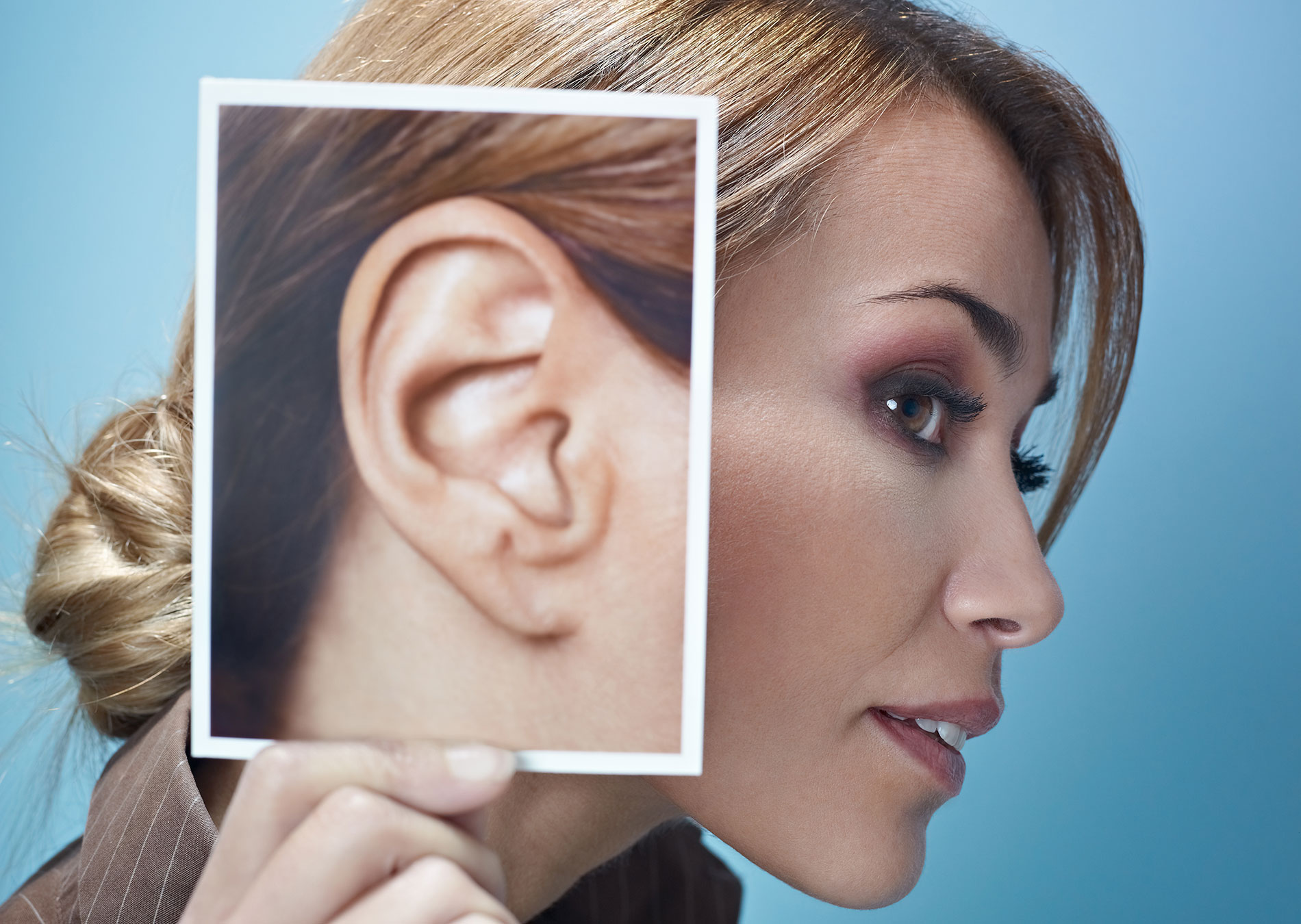Ear size can go unnoticed for many people. But there are some who feel that their ears protrude out from their face too much or have other ear related disfigurations. For these people, the aesthetics of their ears can be a source of great concern and sometimes shame and thoughts of this nature can lead to self-esteem issues, bullying and teasing in schools and social settings.
Otoplasty, or what many refer to as the ‘pinning back’ of ones ears is a common surgery for those who have these feelings and want their ears to appear less prominent.

Otoplasty Definition
Otoplasty is any type of surgery that enhances the look and appearance of the other ear. It may be conducted to correct disfigurations or to make the ear look more proportionate in size when compared to the rest of the face.
Otoplasty – The Ideal Candidate
If you are contemplating a more harmonious look to your face via a change in the look of your ears, then an Otoplasty could be the answer for you. Often times protruding ears can cause self-consciousness in patients and will for example, lead them to wear their hair in certain ways just because they feel they have to try and cover their ears.
 Individuals in good health and without chronic complications with their inner ears are good candidates for this surgery. Children are also able to have this procedure but they must be at least five years old so that their ears will have given time to take shape. For older patients, it is important that they be non-smokers.
Individuals in good health and without chronic complications with their inner ears are good candidates for this surgery. Children are also able to have this procedure but they must be at least five years old so that their ears will have given time to take shape. For older patients, it is important that they be non-smokers.
Having an otoplasty can have a positive affect on the life of the candidate, because they will be less self conscious about the positioning and size of their ears. With any cosmetic surgery though, the best candidates are those who have goals to look forward too and have a healthy outlook on their face and life in general. An Otoplasty will not solve mental health matters but it can alleviate a source of ridicule for some patients, particularly those in their school years for whom protruding ears are painfully obvious to those around them.
Otoplasty – What happens during surgery?
For adults, a standard otoplasty to pin back the ears is usually performed as an outpatient surgery. There are some more complicated deformities however that may require a patient to stay in a hospital overnight, but these are generally for more complicated procedures. Most younger children also have this procedure performed under a general anesthetic.
The actual procedure is relatively short and involves an incision in the back of the ear where a surgeon cuts off extra skin and effectively pulls back the ears and repositions them.
Does Otoplasty Hurt
 After an otoplasty, most patients will have a bandage wrapped around their heads that cannot be removed for at least five days. There is pain associated with the recovery process and it will be different for each patient. In response to that pain, there are different solutions doctors can provide for alleviation. For adults, there are narcotic painkillers that can be prescribed for the first two to three days after surgery. Some doctors also inject a long acting local anesthetic at the end of the procedure that helps for up to four hours after the surgery.
After an otoplasty, most patients will have a bandage wrapped around their heads that cannot be removed for at least five days. There is pain associated with the recovery process and it will be different for each patient. In response to that pain, there are different solutions doctors can provide for alleviation. For adults, there are narcotic painkillers that can be prescribed for the first two to three days after surgery. Some doctors also inject a long acting local anesthetic at the end of the procedure that helps for up to four hours after the surgery.
After the first two or three days, most patients will find that ibuprofen will assist in managing the pain from surgery. Your doctor can advise the best means of handling post up pain.
Otoplasty recovery
Recovery from an otoplasty will vary from patient to patient. Patients will have their heads wrapped in bandages to protect the ears. The first nights sleep will be a challenge, especially if you are a side sleeper. You will be instructed to rest with your head raised and will possibly only be able to sleep on your back with your head directly in the middle of a firm pillow that wont hit your ears. Some patients sleep on their side with their heads angled forward so only their cheek hits the pillow as opposed to their ears.
Your ears will be sore and might throb somewhat. You will most probably feel nauseous. Chewing will also be difficult initially as it will hurt your ears. You will probably have soup for the first 48 to 72 hours. Your throat will also be sore if you had a general anesthetic. These symptoms are normal and should be temporary. Your doctor will let you know what the best options are for you in dealing with these.
You will be able to walk and are encouraged to do so, particularly if you had a general anesthetic. This is to prevent blood clots.
The bandages will most probably be removed after five to seven days. Some patients will still have to wear a special headband at night while they sleep so that their ears do not lose the shape they were operated to uphold.
There is a substantial amount of swelling and bruising on and around your ears after surgery. Do not be alarmed by this. It is best to keep the head elevated and cool in the first week after surgery. Most of the swelling will subside in the first week. Final results will start appearing six to eight weeks after surgery.
For the first week after surgery you will not be able to wash your hair.
At approximately seven days after surgery, most patients are allowed to go back to work and around the same time, children are able to return to school. However, there are strict rules in place to limit the activity of otoplasty patients for up to 6 weeks after surgery and sometimes longer. Some of the things patients are advised against are:
 undertaking aerobic exercise of any kind
undertaking aerobic exercise of any kind- taking showers. The water pressure is likely too much for your ears so baths are suggested
- Any facial expressions that can put pressure on your ears
- Wearing clothing that has to be pulled over your head. It is better to wear clothes that fasten in the front to avoid it brushing against your ears
Otoplasty Scars
Scars from an Otoplasty are typically well hidden. To effectively ‘pin back,’ your ears, a small incision is required behind the ear right at the fold between your scalp and the ears.
Otoplasty Insurance Coverage
An otoplasty performed for purely cosmetic reasons is unlikely to be covered by the patients insurance company. If there is a medical reason behind the surgery, or one where the hearing of the patient is improved, there might be some coverage offered. Patients should call their insurance companies to find out what their regulations in relation to otoplasty’s are.
Otoplasty Alternative
Surgery can be a daunting thing for some and there are some who believe there are alternatives to surgery to correct protruding ears. Some consider daily taping back of ones ears or using some type of adhesive is a solution. Apart from the fact that tape can be irritating on the skin, this method could pose even more embarrassment if the tape releases in the middle of a conversation or a presentation and more importantly, it’s a temporary solution.
Some believe that if splints are placed behind the ears in infancy, it can help the ears readjust so that they don’t protrude as much. This does not always work but if it does, it is limited to infants only.
For permanent results, surgery is most probably the best option. Patients should look into the results and risks thoroughly and make a fully informed decision before deciding to go for it.
Incisionless Otoplasty
Incisionless otoplasty refers to a less invasive means of pinning back ones ears. It involves the setting back of the ears against the skull with permanent stitches. It is believed that this method is most successful where the change required is minimal. Where there is more change and reshaping involved, the stitches in an incisionless otoplasty may not be strong enough.
It is best to consult your doctor on whether incisionless otoplasty is an option for you.




